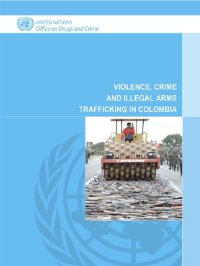By Giacomo Persi Paoli
The potential role of the dark web in facilitating trade in firearms, ammunition and explosives has gained increased public attention following recent terrorist attacks and other criminal activities worldwide. In fact, the hidden and obscured parts of the web are used by criminals and others to access a worldwide market where it’s possible to procure or sell a wide range of weapons and associated products through encrypted marketplaces and vendor shops.
Following the outcomes of the Third United Nations Conference to Review Progress Made in the Implementation of the Programme of Action to Prevent, Combat and Eradicate the Illicit Trade in Small Arms and Light Weapons in All Its Aspects, which acknowledged the importance of considering new challenges and opportunities arising from new forms of illicit trafficking, this Occasional Paper summarises the main findings and implications of the first empirical study investigating the scale and scope of arms trafficking on the dark web.
The findings of this study shed light on the scale and scope of arms trafficking on the dark web, illustrating the range of weapons traded, their market price and most common transit routes. In addition, this Occasional Paper discusses the implications of this growing phenomenon for law enforcement agencies and policy makers, highlighting the key role that firearms control measures continue to play in the presence of new forms of trafficking.
New York: United Nations Office for Disarmament Affairs, 2018. 107p.





















